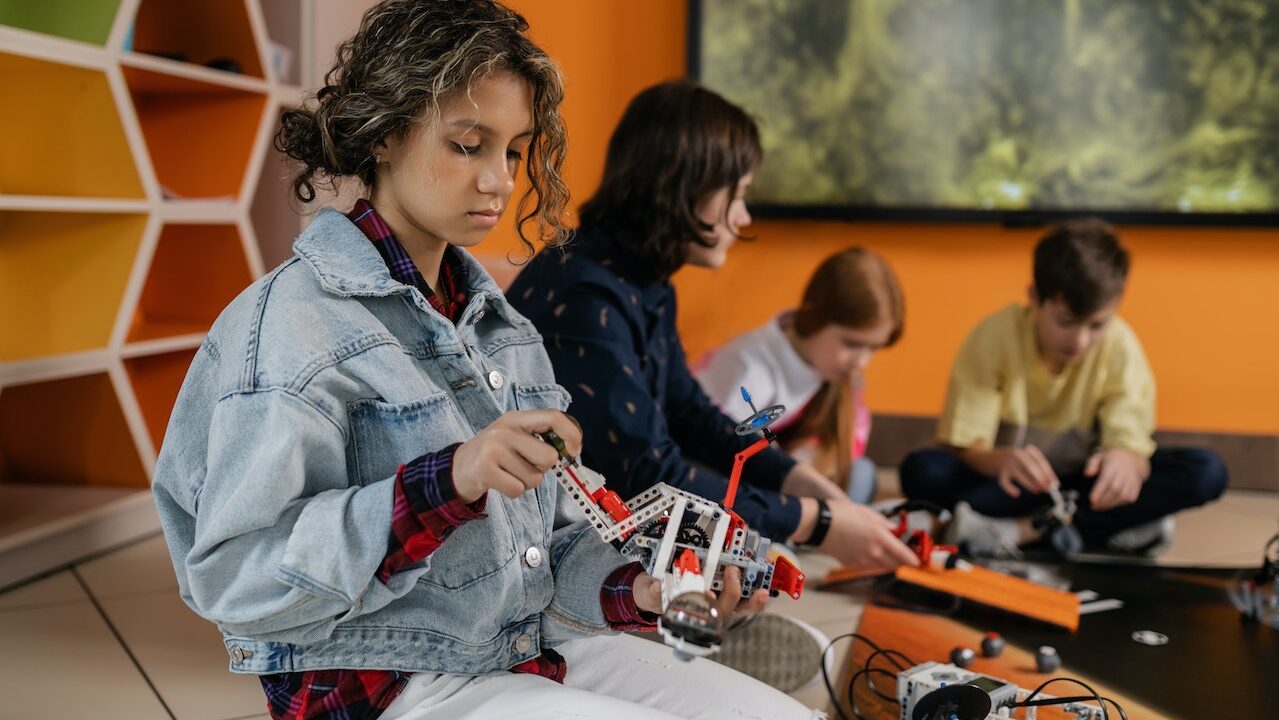
Robotics’ future has enormous potential to transform various parts of our lives, industry, and society as a whole. As robotics advances continue, we are entering an era in which robots are becoming more intelligent, flexible, and interwoven into our daily lives. The future of robotics promises to alter the way we work, interact, and navigate the environment, from automation and artificial intelligence to collaborative and social robots.
Role of Robotics
Robotics has the potential to transform industries such as manufacturing, logistics, and agriculture. Automation technologies, thanks to improvements in robotics, can streamline processes, increase efficiency, and boost production. Robots can execute repetitive and physically demanding jobs with accuracy and regularity, allowing humans to focus on higher-level responsibilities.
AI and machine learning are crucial to the future of robotics. Robots may adapt, learn, and make intelligent judgments based on facts and experiences by combining AI algorithms and deep learning techniques. This opens the door to the development of autonomous robots capable of understanding complicated situations, interacting with humans, and learning new tasks.
Robotics has the potential to revolutionize healthcare and aid for the elderly and disabled. Robotic systems can help with patient care, execute precise procedures, and aid in physical therapy. Social robots can give companionship and emotional support, thereby improving the quality of life for those in need.
The future of robotics stresses human-robot collaboration. Cobots, or collaborative robots, are designed to work alongside humans in shared workspaces. They can help with jobs, offer support, and improve human capabilities, resulting in enhanced productivity and safety in a variety of industries including manufacturing, healthcare, and logistics.
In the future, robots will play an important role in our daily lives, assisting with domestic duties, personal responsibilities, and service-oriented activities. These robots, which range from cleaning robots and home assistants to delivery robots and robotic companions, can simplify our lives, save time, and give convenience.
Robotics has already played an important role in space exploration, and future developments in space robotics are expected. Robots will continue to be used in space exploration missions to investigate faraway planets, asteroids, and celestial bodies. They will help collect data, carry out experiments, and pave the road for human colonization and exploration beyond Earth.
Ethical and societal considerations will become increasingly essential as robotics becomes more incorporated into human society. Robot rights, privacy, and the impact on the workforce will all influence the development and deployment of robots in the future.
Education and research in robotics will be critical in preparing the future generation of engineers, scientists, and innovators. Robotics programs in schools and universities will develop creativity, problem-solving abilities, and interdisciplinary learning, hence advancing robotics technologies.
Here are some examples of how robots can affect transformative change:
Automation and efficiency: In areas such as manufacturing, logistics, and agriculture, robots can automate repetitive and tedious operations. This automation results in enhanced efficiency, higher productivity, and lower costs. Robots free up humans to focus on more complicated and creative efforts by automating regular jobs.
Increased Safety: Robots can be used in dangerous areas where human safety may be jeopardized. They may be tasked with handling harmful substances, exploring difficult terrain, or operating in high-risk regions. We can reduce human exposure to harmful situations and promote safer working conditions by deploying robots.
Healthcare and Assistance: Robots have the ability to transform healthcare by assisting surgeons, assisting in physical therapy, and improving patient care. They are capable of performing precise and delicate procedures, lowering the likelihood of errors and enhancing treatment outcomes. Furthermore, robots can help those with impairments or the elderly with their daily activities, boosting independent living and improving quality of life.
Improved Accuracy and Precision: Robots can perform accurate and repetitive tasks with very small error margins. Robotics ensures constant product quality, lowers defects, and enhances overall accuracy in industries such as manufacturing. Robots can do activities with more precision than humans in fields such as surgery and scientific research.
Assistance and Companionship: In a variety of scenarios, social robots have the ability to provide companionship and assistance to persons. They can provide emotional support, help, and social interaction to those in need, such as the elderly, persons with autism, or those in long-term care facilities.
New chances and Industries: The rise of robotics opens the door to new chances for innovation and the development of new industries. Robotics creates jobs and economic growth by doing everything from designing and building robots to producing software and applications. It also promotes the advancement of associated technologies including artificial intelligence, machine learning, and sensor technology.
Collaborative Workspaces: In collaborative workspaces, collaborative robots, or cobots, can work alongside humans. By doing physically difficult or repetitive jobs, these robots can help with chores, increase productivity, and improve safety. Human-robot collaboration increases efficiency and offers up new opportunities for flexible and dynamic work settings.
Final Words
The future of robots is bright, but it also raises significant concerns and challenges. As we traverse this future, it is critical to ensure responsible development by addressing ethical, legal, and societal concerns while embracing robotics’ promise to improve our lives and push the frontiers of human capabilities.








